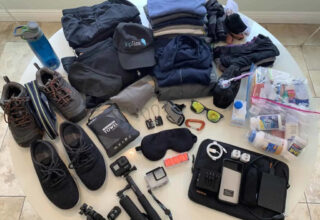FEATURED
Destinations
Top Luxury Experiences to Try in Miami
Miami is a city where glamour and extravagance thrive against the backdrop of sun-drenched beaches and vibrant city life. Whether you are visiting for a…
Discover the Hidden World Beneath Rome – Why the Catacombs Should Be on Your Itinerary
Rome is a city that never stops surprising you. Just when you think you’ve seen…
Why Rome is One of the Most Beautiful Cities in the World
Rome is not just beautiful—it’s unforgettable. From ancient ruins and baroque fountains to the rhythm…
A Taste of Seville: Discover the Flavors of Andalusia
Seville is a city that feeds the soul—and the stomach. Tucked into the heart of…
Top Attractions in Knoxville, Tennessee
Knoxville, Tennessee is a city full of history and culture. There are many interesting attractions…
Crete: Why You Should Visit This Island in Greece
Crete is one of the most popular tourist destinations in Greece. There’s a reason for…
Top Restaurants in Knoxville, Tennessee
Anyone who knows me knows that I love to eat. And when it comes to…
5 Best Dog Friendly Beaches On Long Island
The beaches on Long Island are among the most visited attractions on the island. It…
USA
Top Luxury Experiences to Try in Miami
Miami is a city where glamour and extravagance thrive against the backdrop of sun-drenched beaches…
TOP 10 DOG FRIENDLY BEACHES IN MA (MASSACHUSETTS)
Do you want to enjoy a vacation with your dog? If you’re a dog parent…
Trip for Two: A Romantic Getaway Guide For Pigeon Forge
With busy schedules, chores that keep piling up, and social obligations that never seem to…
Africa
Europe
Discover the Hidden World Beneath Rome – Why the Catacombs Should Be on Your Itinerary
Rome is a city that never stops surprising you. Just when you think you’ve seen…
Why Rome is One of the Most Beautiful Cities in the World
Rome is not just beautiful—it’s unforgettable. From ancient ruins and baroque fountains to the rhythm…
A Taste of Seville: Discover the Flavors of Andalusia
Seville is a city that feeds the soul—and the stomach. Tucked into the heart of…
asia
Adventure Seekers’ Guide to Thailand
Thailand, full of green landscapes, strong culture, and lively history, is extraordinary for those seeking…
Top 10 Must-Try Dishes When Traveling to India
India is known as a country for its diversity where Indian food is world-famous for…
Why Sri Lanka Should Be on Every Traveler’s Bucket List
Discover the enchanting island of Sri Lanka, a gem nestled in the Indian Ocean, where…
Culture
Travel guides
WHY KEEP A BREAD CLIP IN YOUR WALLET WHILE TRAVELING
As travelers, we often focus on the large, obvious things that we need to pack…
Dummy Ticket Services: An Essential Tool for Modern Travelers in 2024
In an era of increasingly complex global travel, dummy ticket services have emerged as a…
The Backpacker’s Guide to Exploring Japan’s Lesser-Known Hidden Gems
Tired of the same old tourist trails? The neon dazzle of Tokyo, the crowded temples…
Newcastle’s Renewable Revolution: How To Keep Your UK Business Travel “Green”
Look around, and it’s not hard to find evidence that our planet is crying out…
Unraveling the Vibrancy of Jamaica: A Traveler’s Guide to Carnival and Beyond
Unraveling the vibrancy of Jamaica is like embarking on a captivating journey through an island…





















